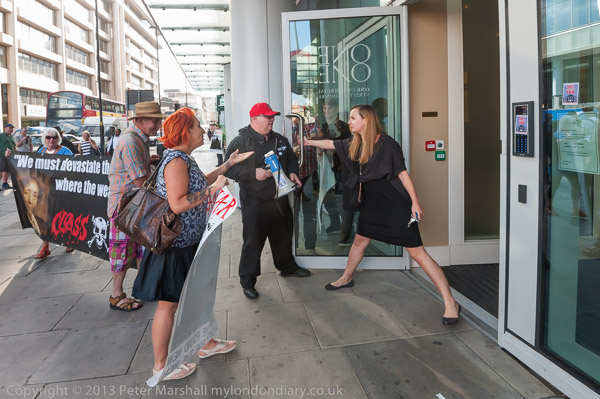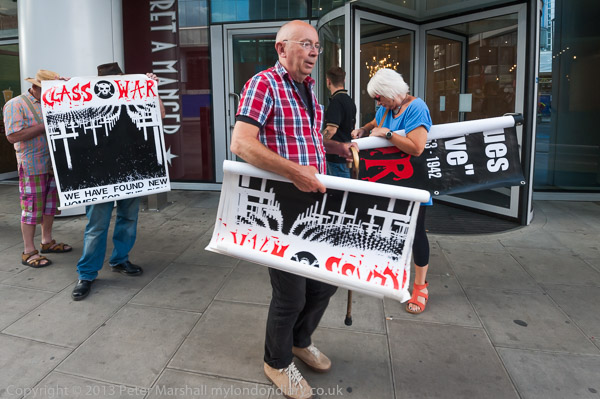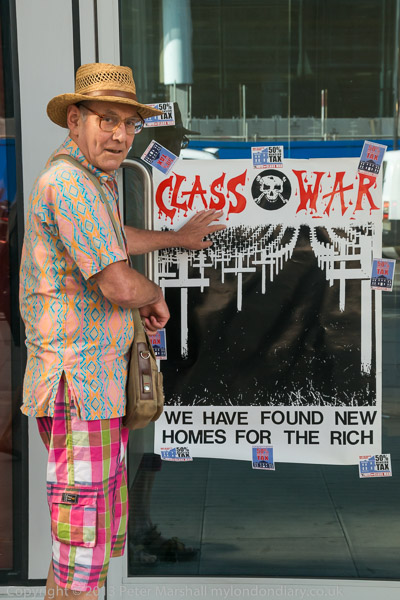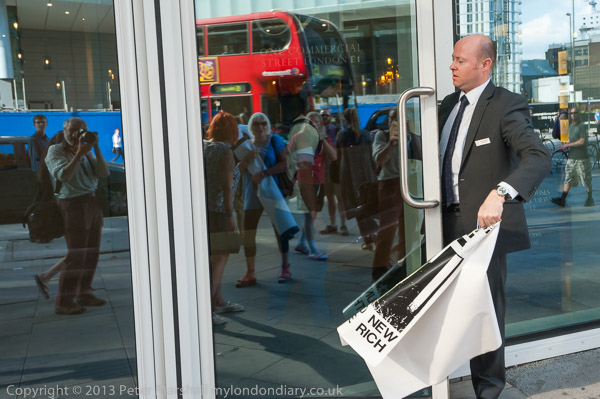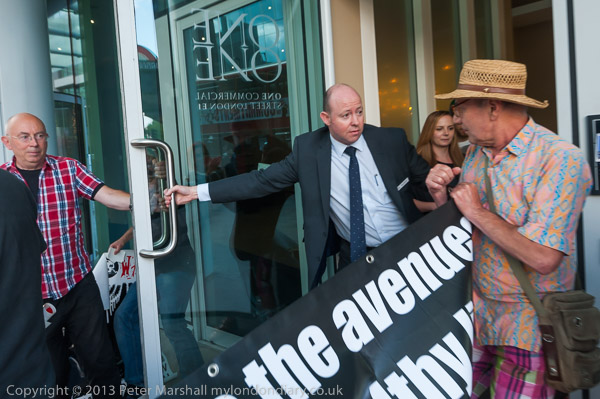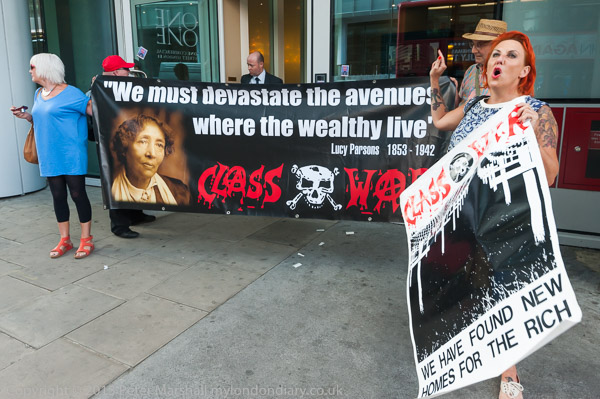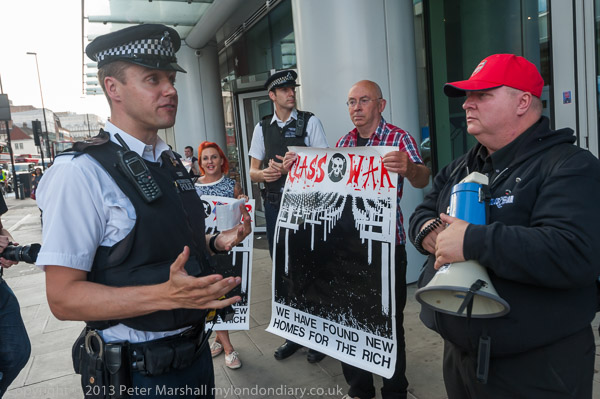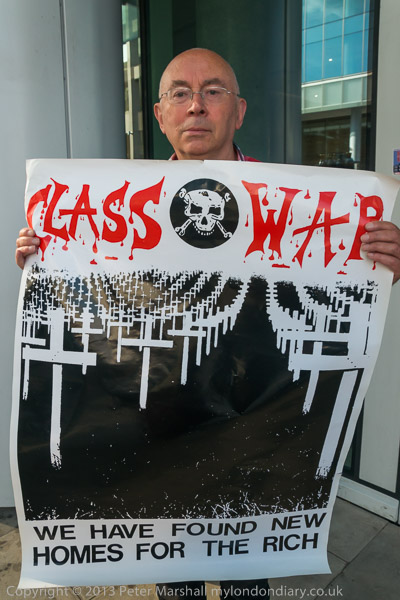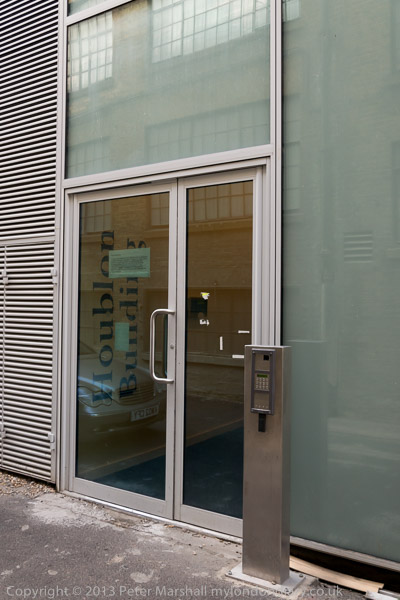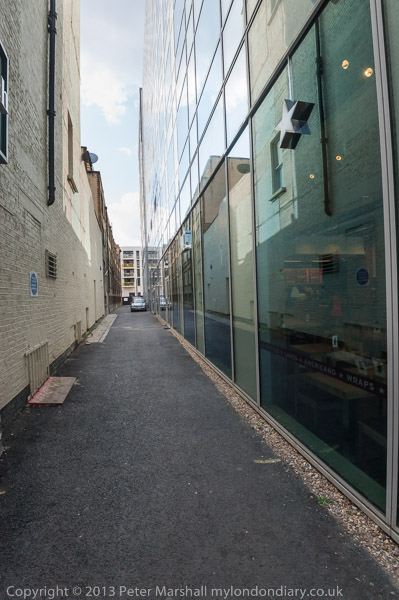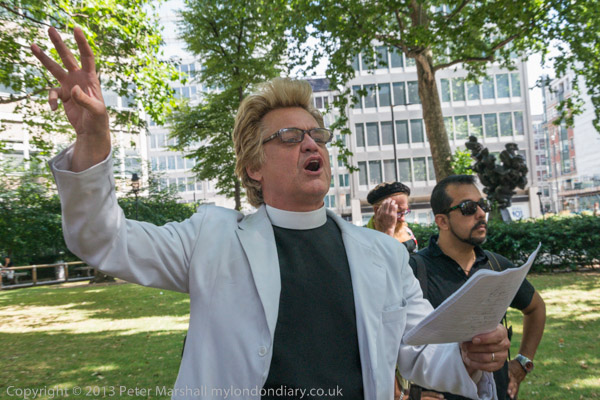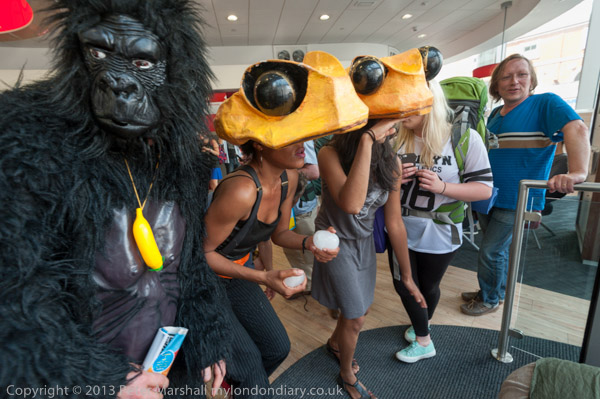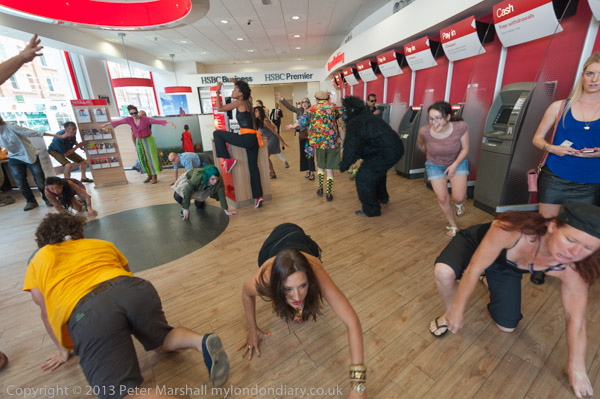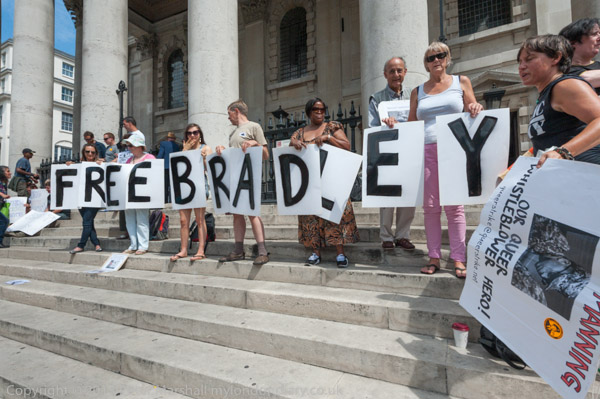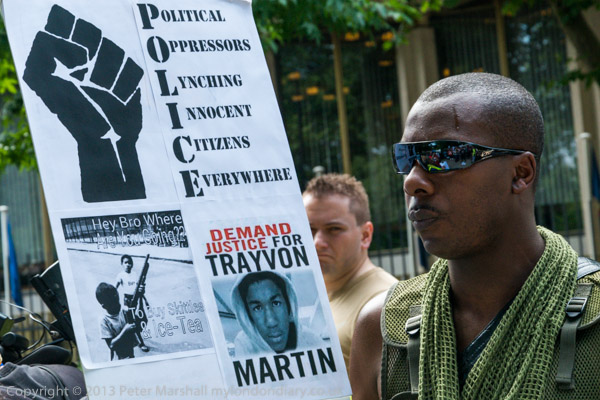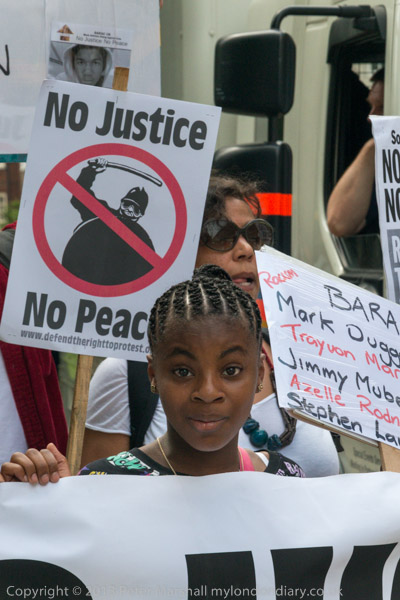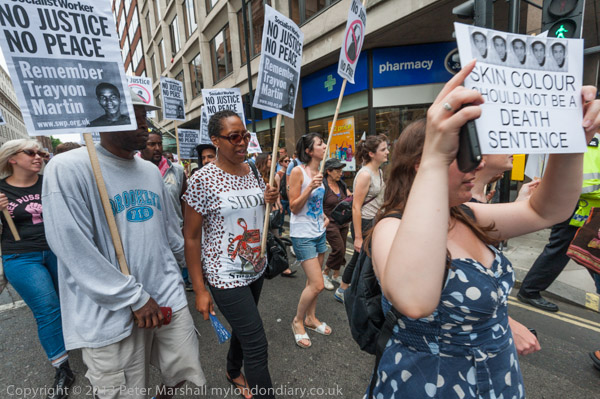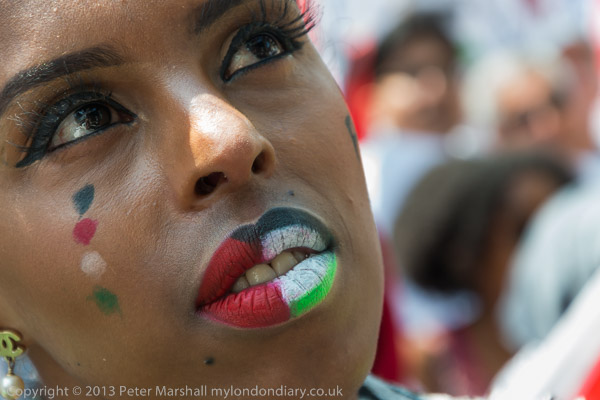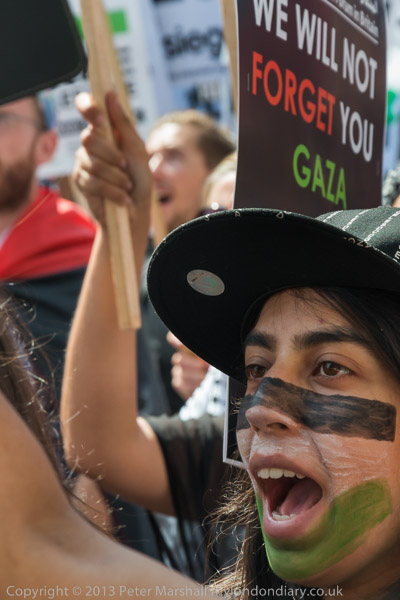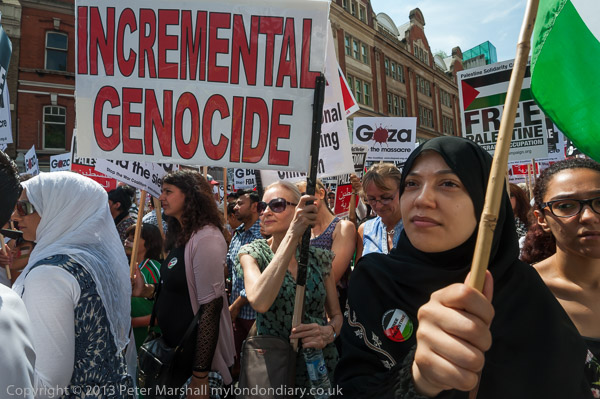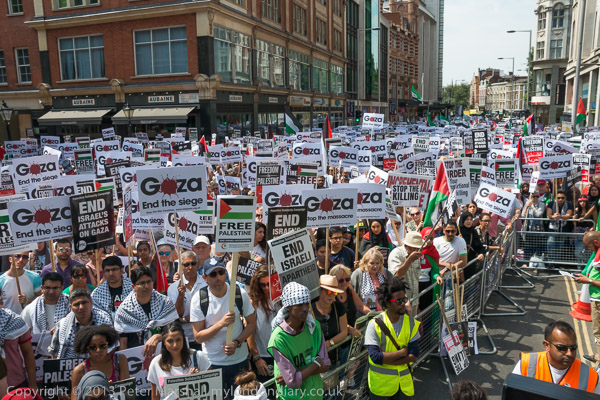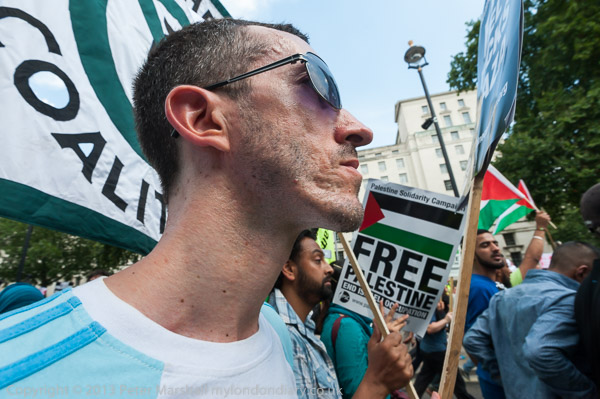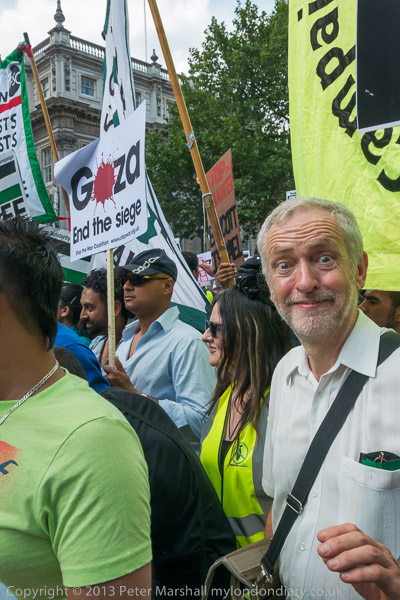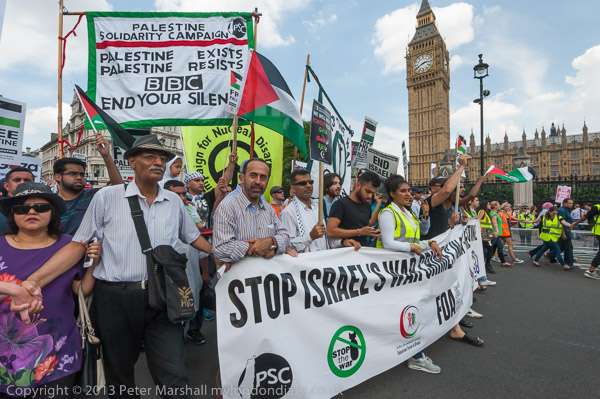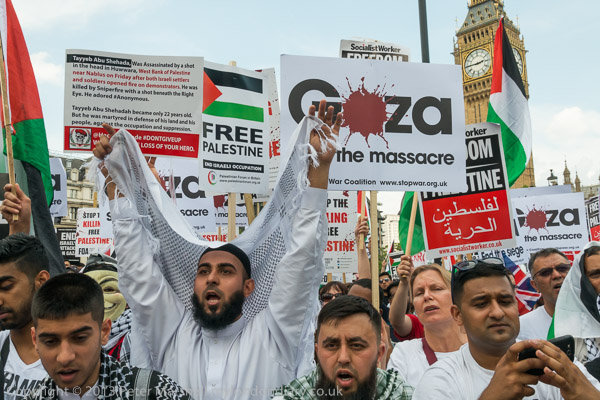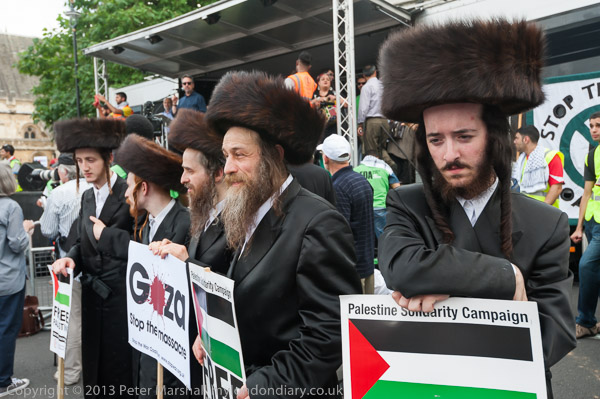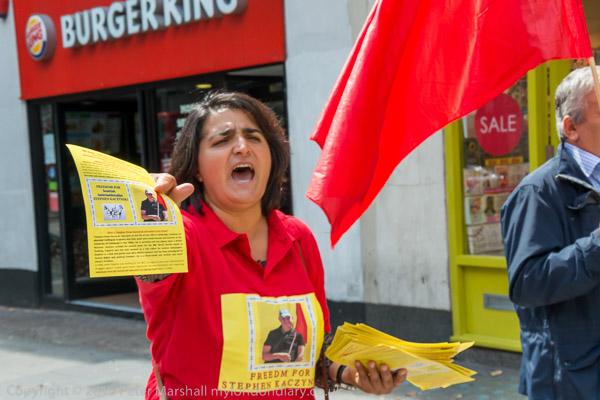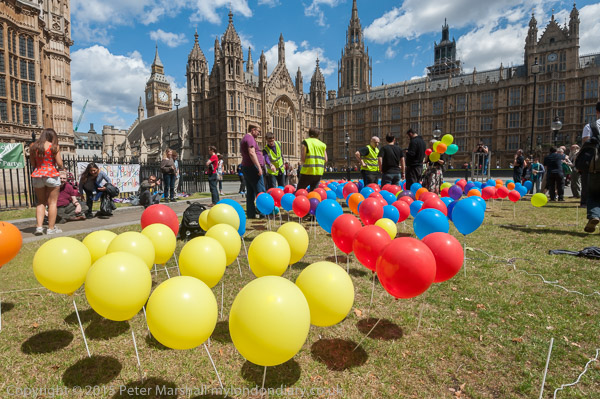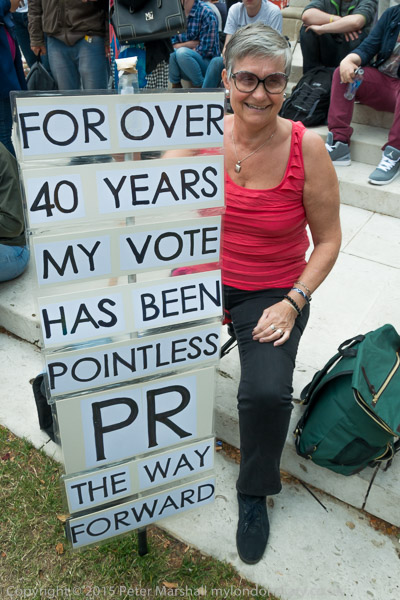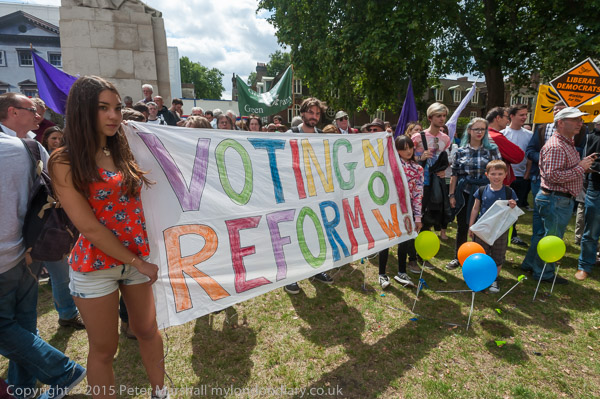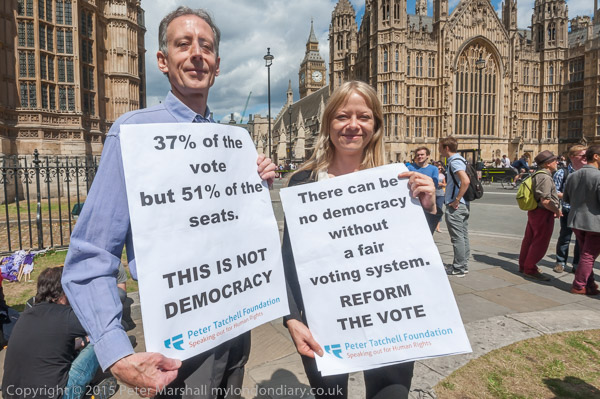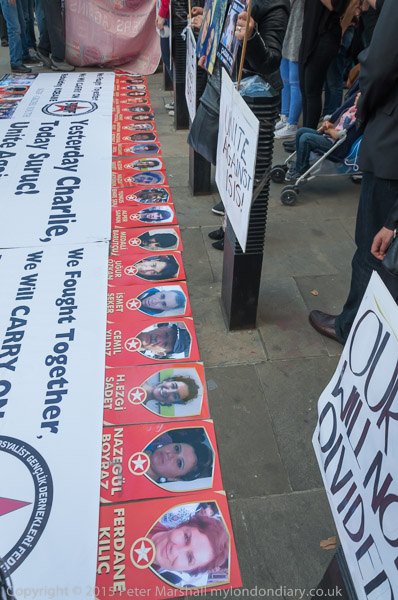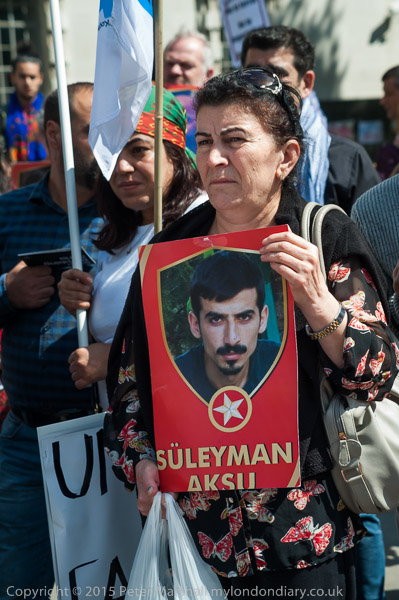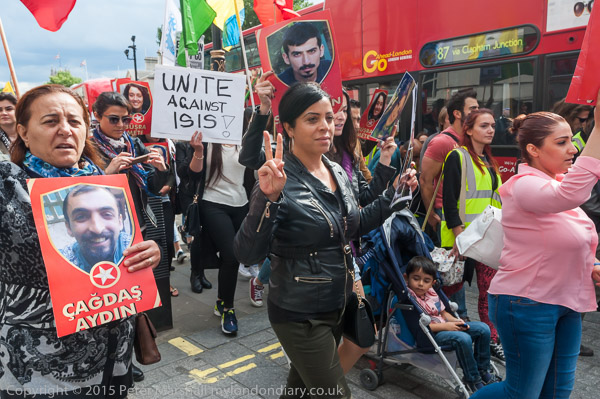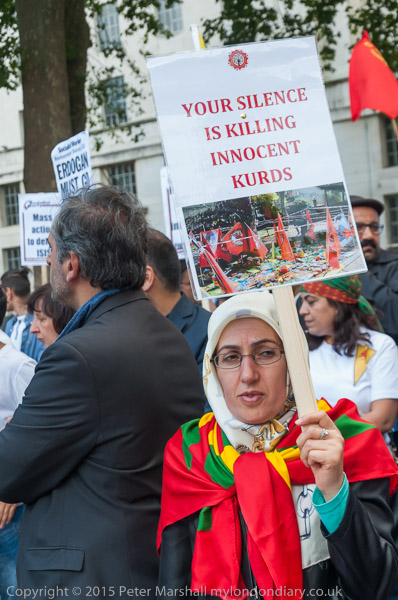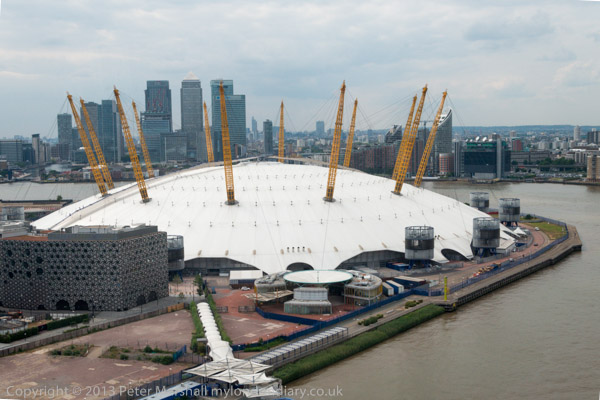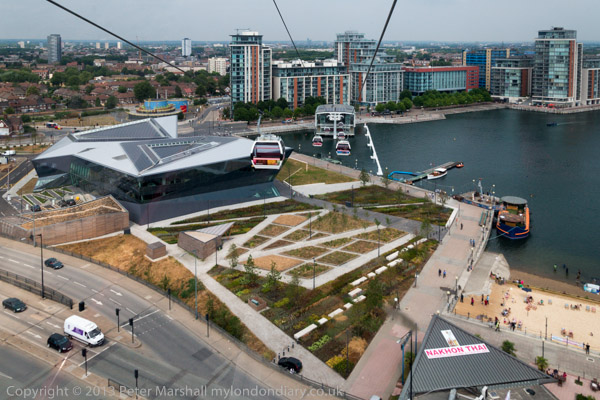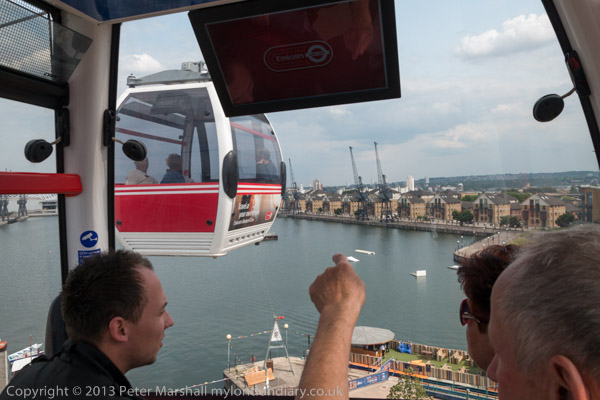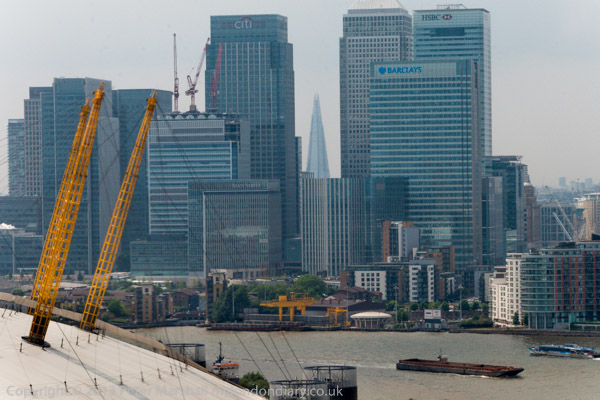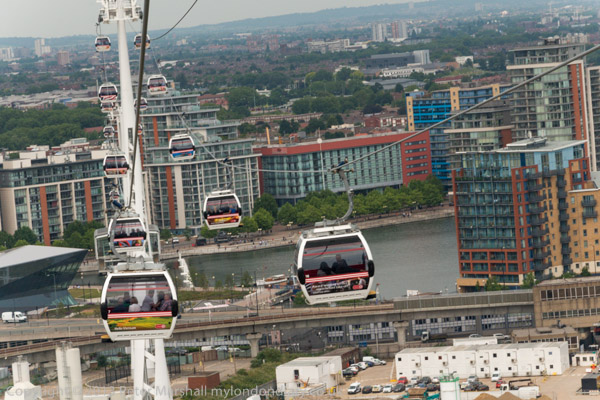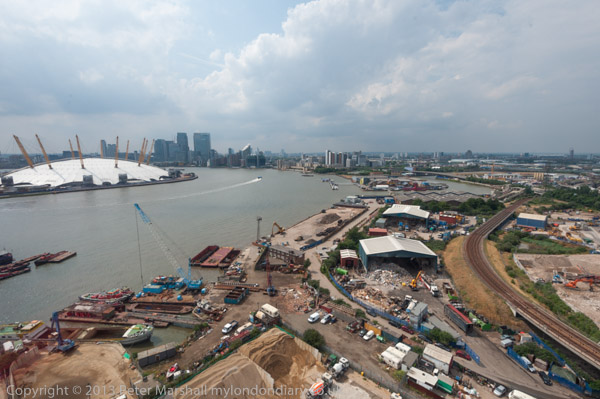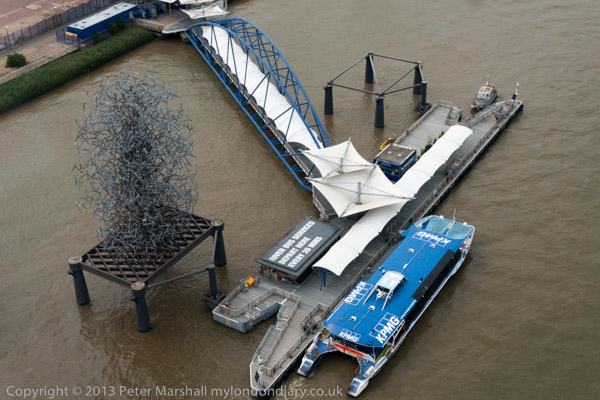If the houses around The Boltons are all much the same – the Grade II listing text for most simply tells you to see that for the first pair, 1 &2 – some distinguished themselves by their gates. Those of No 16 have lost their eagles since I made this picture, and the iron gates have lost both their angled top and the arch above as well as the rampant creeper but have gained an entryphone and a letter box. Walking down the street today there would be no picture to make here.
There are various designs of wrought iron gates to the houses around The Boltons, though quite a few share the same pattern. This one, I think at No 23, appealed to me more than most and I was fortunate to find it half opened, giving a clearer view of the tiled path and those ornamental ceramic leaves containing a small bush.
It also shows the peeling paint which still then could be seen on quite a few of these houses, which are now all I think pristine. I rather liked the impression it gave of these houses being old and lived in.
Boltons Place leads north from The Boltons to the Old Brompton Road and its east side is occupied by several large houses. That occupied by Jenny Lind, the ‘Swedish Nightingale’, has undergone various changes of street name and number since she moved in as the first occupier in 1874, and is in a rather different style to the rest of the area. In 1906 it was altered by the addition of a rather attractive semi-cicular bow window, hidden in my view. The effect is less austere, described in the Victoria History as “un-Godwinian suavity in a rather French way“.
The west side of Boltons Place is quite different, occupied by Bousfield Primary School. This primary school was built in 1954-6 by Chamberlin, Powell and Bon and is on the site of Beatrix Potter’s house and garden at 2 Bolton Gardens, where she lived for more than 40 years until she was married in 1913, a short walk from Brompton Cemetery where she found some of the names for her characters. The site became available thanks to wartime bombing.
The school is a heavily over-subscribed local authority school which had its origins in a school set up as a “poor school” for local Catholic children by the parish priest in the 1800s which was renamed Bousfield School in 1913. The children were transferred to the new school in 1956. Later the old building became another Catholic school.
The Fulham Road has a rather different atmosphere with this row of shops with an entrance probably for horses to be led through to stables behind. When I took the picture it led to the Hungry Horse Restaurant, and although the board with its two horses heads looks like that of a French horse butcher, the English menu will almost certainly not have included horsemeat – nor will it have had hay offer, so any horses would have remained hungry.
Now the gate seems closed and the area behind looks unused. Unsurprisingly the shop at left is now an estate agent.
The cinema opened as the Forum Theatre in 1930, designed by architect J Stanley Beard, featuring live variety shows with an orchestra. It was sold to Associated British Cinemas (ABC) in 1935 and lost its organ in the 1960s. Like others it got altered internally to provide first three then four, five when I made this picture and finally six screens. Now owned by Cineworld who have transferred it to their Picturehouse chain, it had further renovations in 2019.
All photographs on this and my other sites, unless otherwise stated, are taken by and copyright of Peter Marshall, and are available for reproduction or can be bought as prints.






